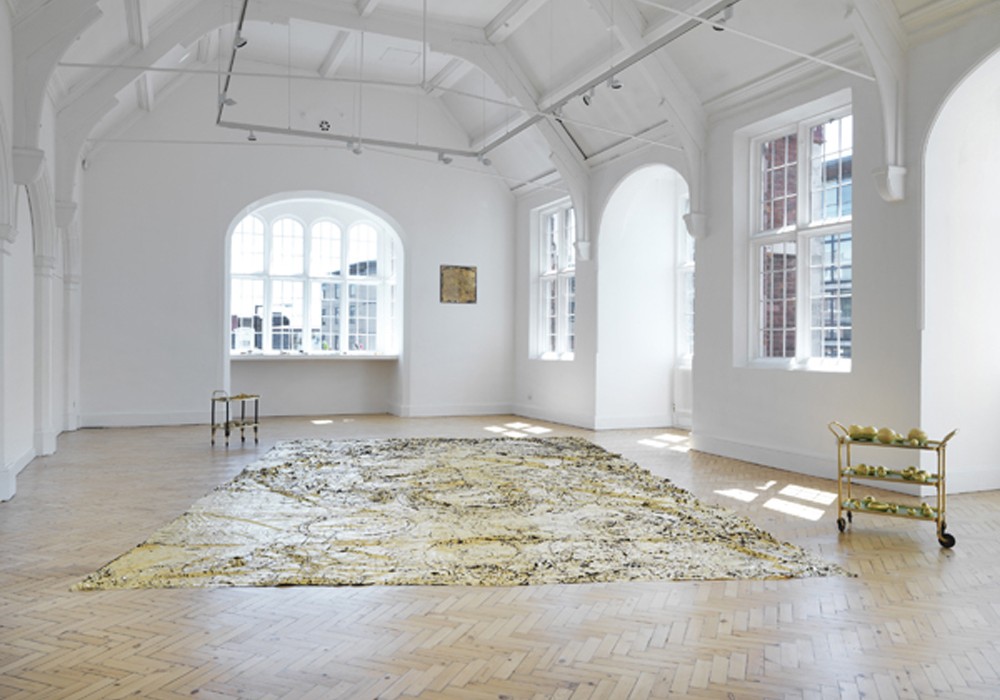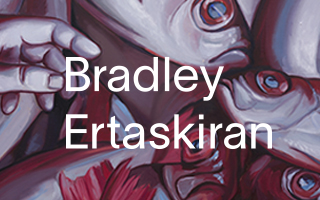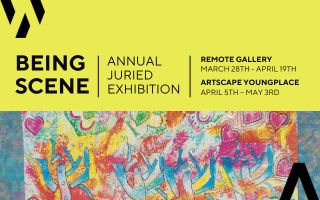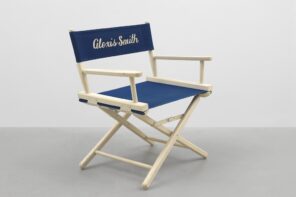Enthusiasts probing the furrows of British art are currently liable to stumble across one of two types of fossils. One, London’s major galleries and museums have become the pliant vehicles of carbon behemoths such as BP and Shell (the Tate and The National Gallery, London, respectively) – a situation that has sparked a series of protests and ongoing legal actions by groups including Art Not Oil Coalition, Liberate Tate, and Platform. These relics of the past encumber the present like Marx’s dead weight of history: few of us know what to make of such fossils. On the other hand, numerous mid-size public art galleries have recently presented exhibitions that hark back to the halcyon days of the 1970s – a time before current pressures to bolster insufficient grants with donations from hard-to-find private patrons (Brit-millionaires are apparently not as generous as their US cousins). These fossils are desirable: I have seen mostly excellent solo exhibitions in recent months by Bruce McLean (at Firstsite, Colchester), Stuart Brisley (Modern Art Oxford), Shelagh Wakely (Camden Arts Centre), and Carlyle Reedy (Flat Time House). Here, I am not concerned with the quality of the works in these shows; instead, my question is: Why these shows, now?
I suggest this: these exhibitions indicate that curators, museum directors, fans, and critics are all searching for alternative models to a global industry that dominates the public display of art. Before we follow this line of thought, however, it has to be said that things are murky: the purity of the past is a myth, of course, and there’s been no era that presented itself without portent. Corporations have long used art as PR [after all, cigarette mainstay Philip Morris sponsored Harald Szeemann’s much-lauded exhibition When Attitudes Become Form (1969), which has become a canonical curatorial project within art discourse].
Nevertheless, there has rarely been such a gap between the function of art as critical discourse and certain funders’ ambition to use exhibitions as a marketing tool. Indeed, our local British situation reflects a global conflict, pitting left-leaning creative workers and institutions against rapacious neoliberal funders and reactionary state sponsors. This year, there have been resignations, protests, and boycotts following tussles between funders, artists, and curators at big-hitter biennials in Gwangju, São Paulo, Sydney, and the roaming edition of Manifesta held in Russia. In the UK, following legal action by activists at Platform, the public is on the cusp of discovering whether the Tate will reveal how much funding it gets from BP. This has all unfolded at a time of renewed climate protests under the banner of the People’s Climate March, which took place in late September in London and elsewhere, anticipating the UN climate summit in New York.
Conversely, public art galleries in the UK have devoted summer and fall programs to exhibitions of lesser-known artists who established themselves between the late 1960s and 1980s, and who spent at least part of their careers working outside of art galleries – on the street, in theaters, and in alternative arts venues and festivals. In Colchester, there was a much-deserved solo show of delightfully funny works by Bruce McLean – for me, one of the strongest exhibitions of the summer. Never an explicitly political artist, McLean has nevertheless spent much of his life bursting the bubbles of class and refined aestheticism that dominated the London art scene in the 1960s (he’s a friend and contemporary of Gilbert & George, and shares their early anarchic spirit).
Just opened at Modern Art Oxford, there is an exhibition by octogenarian performance artist, painter, and provocateur Stuart Brisley. Its subject – monarchy and republicanism – is germane given the current media circus orbiting the queen’s great-grandchildren and the near-succession of Scotland from the Union. Unfortunately, these new works seemed simplistic – an installation of ‘royal blue’ walls and an interactive set of boards on which visitors can write their opinions about the state of the nation. Jeremy Deller made a far more pointed reference to England’s monarchy at last year’s Venice Biennale, in a startling wall mural depicting a vast bird of prey (a hen harrier) clasping a Range Rover in its talons – an oblique reference to a story that Prince Harry had shot and killed some of these rare birds.
In London, the Camden Art Centre has an exhibition of Shelagh Wakely’s ethereal post-minimal work. Wakely, who died in 2011, made ephemeral installations using gold-colored powder or turmeric; spidery drawings of figures and everyday objects; and handmade sculptures from twisted pieces of wire, gold leaf, and pottery. Counter-cultural impulses drawn from craft traditions or directly from nature are equally evident.
Across town at Flat Time House I enjoyed an archival trawl through the career of poet, performer, and visual artist Carlyle Reedy. The exhibition consists largely of posters, ephemera, a few videos and photographs. Reedy performed at once vital and now mostly-forgotten sites such as the South Hill Park Arts Centre in Bracknell, a small town thirty miles from London, which hosted avant-garde performance events and a video-arts festival throughout much of the 1980s.
Clearly, there is plenty of relevance in looking towards historical precedents as alternatives to current funding models. Brisley, McLean, Reedy, and Wakely all made risky, challenging works in the ad-hoc galleries and underground spaces of London and the UK’s numerous regional arts centers. These spaces – warehouses along the Thames such as 2b Butler’s Wharf, or the borrowed spaces in Camden Town used by the London Film-maker’s Co-op – had been made available by the postwar evacuation of industry from the Thames, and the oil crisis and financial collapse of 1974 [when Britain was bailed out by the IMF (International Money Fund)]. Much of the financing for these groups came from small grants from the Arts Council, and now-defunct local government organizations such as the Regional Arts Associations and the radical Greater London Council (the latter was smashed by Margaret Thatcher in the mid-1980s, as part of her broader attacks on left-wing institutions such as the miners’ groups and the unions). Nevertheless, it should be noted that that historical situation is not our own. History doesn’t repeat like that.
More fundamentally, perhaps, direct governmental sponsorship is also not the solution. A number of recent biennial bust-ups have been caused by clashes between artists and state or local officials – as in the above-mentioned cases of biennials in Russia. Such sponsors can be, and frequently are, explicitly censorious. In the UK, for example, this global clash between government bodies and the arts has been borne out by a surreal episode at the Grundy Art Gallery in Blackpool. There, moving-image artist Jennet Thomas had her solo exhibition ‘postponed’ due to the local council panicking after seeing images from her new project in which an actor is made up like Thatcher, albeit covered in a surreal coating of Tory-blue paint. The exhibition is due to go ahead, but only after the General Elections next year.
Late last year, Mike Nelson had support for his planned project of a pyramid-shaped sculpture made from the destroyed remnants of a former council estate in London, but it was removed following a confrontation with local councilors.
These debacles demonstrate that what is most needed within the funding of today’s art is some robust terms of engagement with funders – both state and private. This includes: a clear separation of powers so that funders can’t meddle with exhibition programs; transparency (the Tate should make public the details it’s redacted from its accounts); and a choice of sponsors whose business does not contradict the positions that critically-engaged art tackles (including neoliberalism and climate change). These are real options: at the recent UN climate-change conference in New York, 181 organizations pledged to ‘divest’ (to withdraw from financial involvement with the oil, gas, and coal industries); if Lego, universities, and even local councils can do this, surely museums and galleries can, too. The recent spate of retrospective exhibitions reveals that art thrives when it’s supported, with no strings attached.













